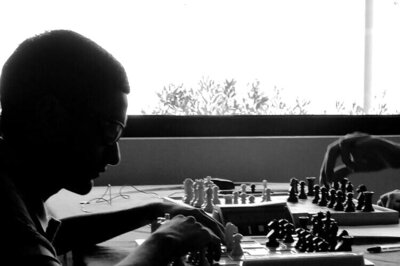
views
Kunaya, Poonch (J&K): Afshana Kousar could not pay attention in class that day. A Class 2 student, Kousar sat trembling in the classroom, her head bowed in her arms, as the deafening roar of mortar shelling carried out by Indian and Pakistani air forces outside rocked her school.
For her teacher though, it was a normal day and the noises outside — just another fire-exchange between the two countries on the Line of Control (LoC) — which is just a few kilometers away from the government school.
However, on February 23, the firing intensified abnormally and the teacher had to call it a day. Kousar, along with her classmates, walked body-ducked for half an hour to Salotri, their village. With every passing minute, the skirmishes intensified.
When Kousar finally reached safely, she wondered why bombs were exchanged near her home. For children like her, the rationale of war is a complex situation to comprehend.
That night, as Kousar and her parents were preparing for bed, a transonic was followed by a huge bang and objects started falling from the roof.
A lot of things happened at once. A mortar had landed in Kousar’s neighbourhood. A woman and her two kids were killed. The father was gravely injured. A fire broke out in Kousar’s house too, but she and her family miraculously escaped unhurt.
Children from Kousar's village Saltori, situated along the LoC, who are currently living in a temporary shelter.
The next day, Kousar and the neighboring families were evacuated and shifted to Salotri, a village few kilometers away, located at a safer location.
The families — around 60 members — have been rehabilitated to a three-room government school building. Mattresses have been spread on rough mats and women and men live in separate rooms.
All of them are waiting for the situation to get better so that that they could return to their houses. But the children don’t want to go back.
Kousar, who aspires to be a teacher, says the only thing she misses is her school bag, which was partially burnt in the fire that night. For the last ten days, she has not been to the school and hasn’t even seen a book.
For her and the other children from the village, the situation was confusing. Yet, Kousar’s reason to want to become a teacher, had a lot to do with the situation.
“No one is here to teach me. I want to get back to my lessons,” she says. “This is the reason I want to become a teacher. I will be teaching children of my neighborhood even when schools are shut,” she says.
She worries about the exams she missed.
“My exams were scheduled to commence from March 2. Now, I don’t know if I will have to repeat the class,” she says, evidently perturbed.
Her father, like other people in the neighborhood, has not been to school, works in the fields and sometimes goes to work in town as a laborer.
The government school building which has turned into a makeshift relief camp for the people.
The stage for the present crisis between India and Pakistan was set by a 20-year-old Jaish-e-Mohammad armed rebel, Adil Ahamd Dar, on February 14 when he rammed an explosive laden vehicle into a CRPF convoy, blowing up at least 42 soldiers in a rare suicide bomb attack. In an act of retaliation India conducted air strikes on Pakistani soil, and soon enough, a military duel between the two countries started.
War hangs perpetually at the horizon for the people living along the LoC, who worry about their lives and the course of their new generation. Irshad Ahmad, a local teacher says that the situation has traumatized the children here.
“It is impacting the health of the children. They are scared to venture out,” he says. Irshad tells News18 about her eight-year-old daughter, who has compelled him to delete a war-imitating game from his mobile phone out of fear.
“She would play the game, where jets would fire. But after witnessing the actual situation she asked me to delete it,” he says.
“Even a small bang terrifies her.”



















Comments
0 comment